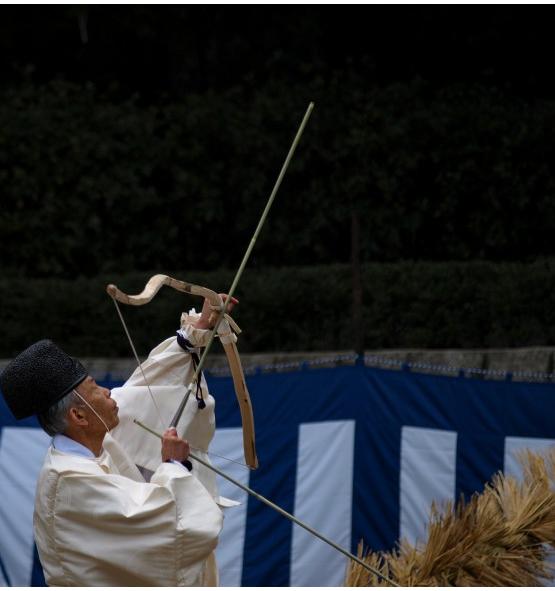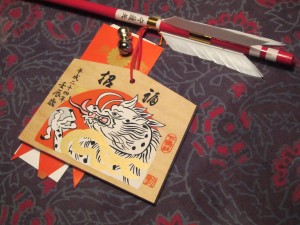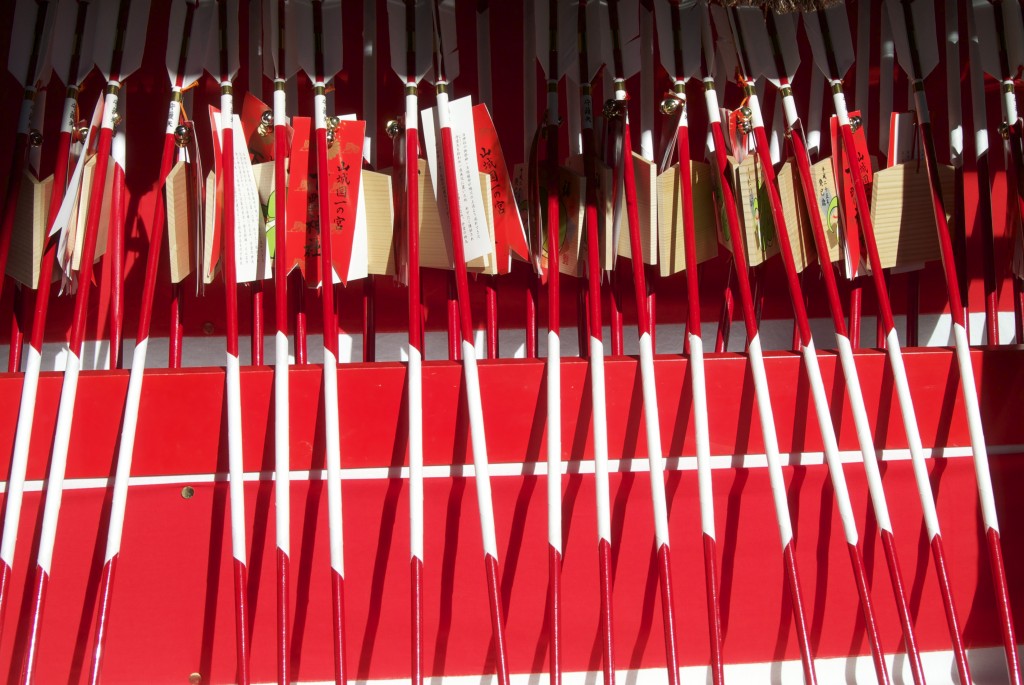
Today is auspicious arrow day… A symbolic shooting of arrows in the air in the direction of the four quarters to ward off evil.
There’s a sacred archery festival (busha sai) at Fushimi Inari, which has a close connection with arrows through its founding by the Hata clan. According to tradition, Hata no Iroko was hunting in 711 on Fushimi hill when he shot an arrow at a ball of rice which turned into a white egret and flew to the top of the hill where it revealed rice. The story speaks to the fertility of the phallic object, rather than the piercing of unseen demons featured in the festival.
There’s also an archery event at another shrine founded by the immigrant Hata clan, at Matsuo Taisha here in Kyoto. Kokugakuin says: “There is a religious archery event called Hōsha shiki on January 10 and 12 at Matsu-no-o Great Shrine (Matsu-no-o taisha) in Ukyō ward, Kyoto City, Kyoto Prefecture. Nusa (ritual paper streamers) are placed in front of the Nō stage and archery targets are hung up. On the back of these targets is written the Chinese character Oni or demon.

Last year's arrow, year of the dragon, due to be ritually burnt on Jan 15
Food offerings (shinsen) in the old style are offered. The archers take up the bows and arrows. First they shoot the bows in the ushi-tora (northeast) direction, then to the four quarters, then heavenwards. After they have shot at the target, the shrine officials shoot arrows.”
Arrows are also used for divination purposes in Shinto, and the New Year arrow (hamaya) is a popular item to place in the house for protection through the new year. Kokugakuin says: ‘the arrow is to ward off misfortune and to attract good luck. From the Edo to the early Meiji period, arrows were given as gifts to celebrate the first New Year of a male baby’s life, frequently in a set together with a pair of decorative bows called hamayumi (“demon-breaking bows”).
The custom of selling the arrow alone is thought to be a later abbreviation of this custom. Even today, the custom persists of standing such symbolic bows and arrows at the northeast and southwest corners of a new house (called kimon, the directions thought particularly susceptible to evil influences) on the occasion of the roof-raising ceremonies.”

New year good luck arrows on display at Shimogamo Jinja

Hello,
I live in England, where can i buy the Good Luck Arrows (Hamaya)?
Kind regards
Clive
Hello Clive… I don’t think you can buy any in England. The nearest shrine to you would be that in Amsterdam run by Paul de Leeuw, though I don’t know if he supplies anything like hamaya… You’re probably best off asking a Japanese or friend to send you one from Japan.